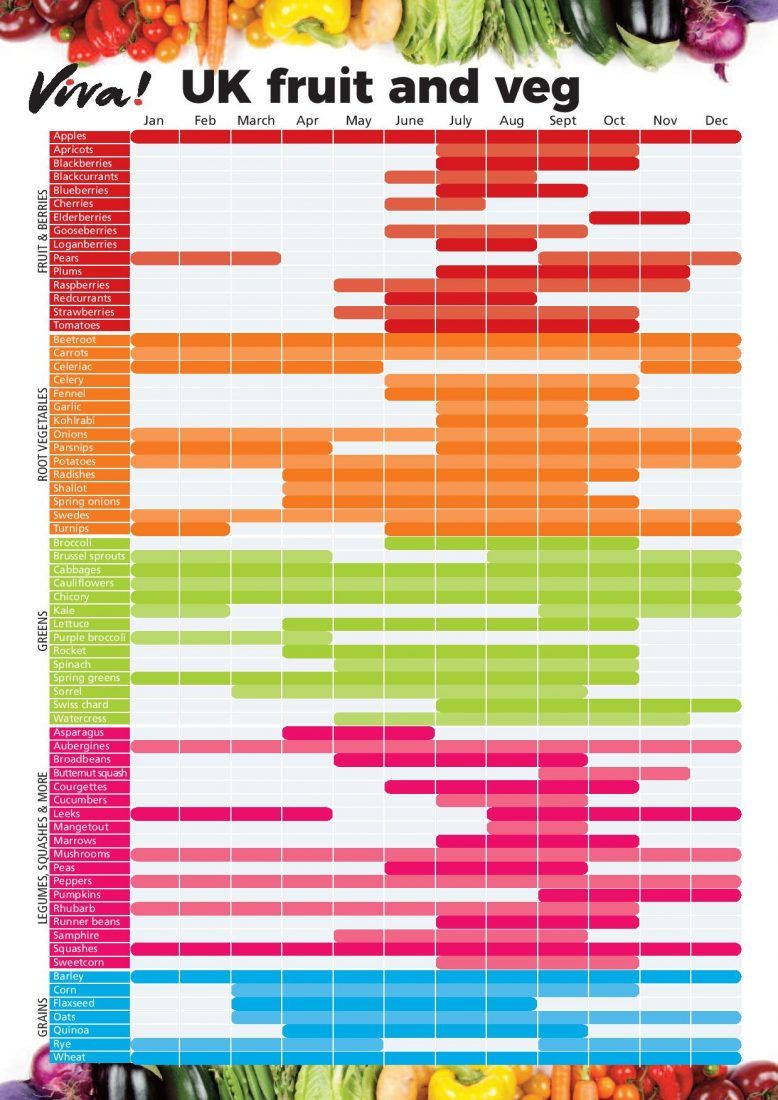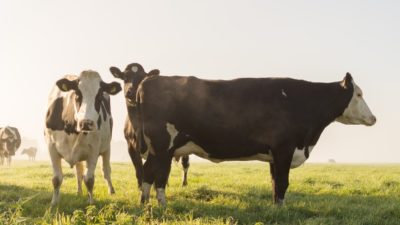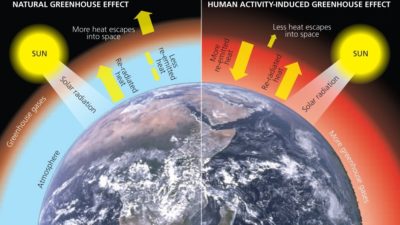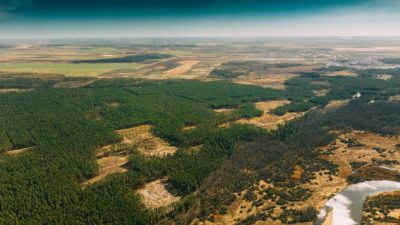Farming for a vegan future – how?
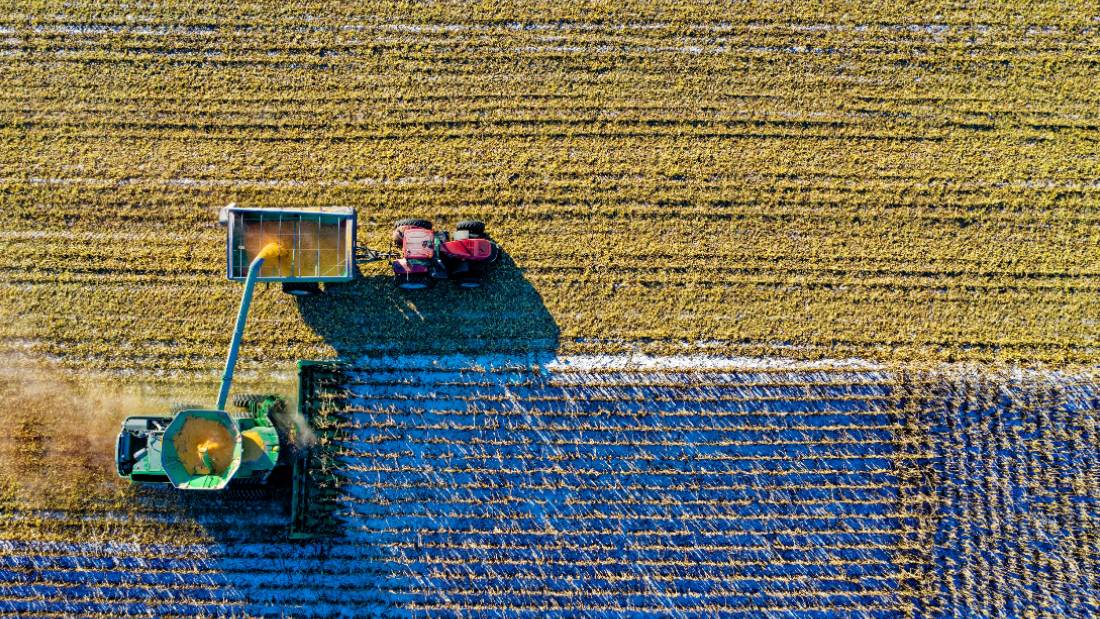
This is part two of four in this section. Read part one:
We have examined at the urgent need for plant-based agriculture: to protect public health; to mitigate climate change; to optimise land use for planetary health; to restore ecosystems and biodiversity; to improve food security and food self-sufficiency; and to combat sector uncertainty.
The question now is how? How are we going to transform a landscape and an industry that centres around the production of animals for food?
The other question that is commonly raised is: “What about the farmers? We have to look after them”. This idea – that farmers are a protected species – has been strengthened and perpetuated by government, and the subsidies that have cushioned farmers from hardship. This support is partly based upon preserving tradition, and partly on the supposition that farmers are the people who produce our food.
Not so, says Professor Sir Ian Lamont Boyd, former chief scientific advisor to DEFRA. According to Professor Boyd, at least 80 per cent of farms in the UK don’t produce very much at all with livestock farming being the least profitable of all sectors.
Trades and industries have come and gone over the centuries, as well we know. Livestock agriculture will join the cotton, wool, coal, ship-building and countless other industries that once boomed in our country but, for a variety of reasons, are no more. The change is inevitable, and the ability to adapt to it will be a strong survival skill. In the words of Derek Stewart, Business Sector Lead in Agrifood at the James Hutton Institute: “Evolve or die!”
Nonetheless, we want the transition for farmers to be as just and fair as possible. There is no need for any farmer to be without a livelihood. Farmers For Stock-Free Farming (FFSFF) present a three-pronged approach which ensures that no farm is left behind.
The three roads to animal-free farming are:
- Growing Crops for Human Consumption
- Restoring Native Trees and Ecosystems
- Starting Diversification Enterprises.
These three can be done combination with each other, or a single option may be implemented. The type of farmland and the geographical location will help to inform the choices made.
So, let’s take a closer look at these options.

Viva! Farming
We are at a crossroads as a species and our food and farming systems must change to meet the challenges ahead. Viva! Farming wants to transform our food system by helping farmers transition away from using animals in agriculture.
Visit the Viva! Farming website for more information.
For many farmers looking to shift out of animal agriculture, the first option to be explored is whether they can grow crops for human consumption. The British Isles with its temperate climate and plenty of rainfall is an ideal growing region. Moreover, we know that there is enough arable land in the UK to provide for the protein, calorific and nutritional needs of our entire population. Sadly, 55 per cent of our precious arable land is being used to produce animal feed. More than half of all cereals, pulses, and oil crops and, in Scotland, more than half of the vegetables grown are destined for livestock!
Our ancestors ate more than 800 varieties of fruit and vegetables. Today, 91 per cent of UK cropland is occupied by just seven crops (wheat, grass/forage, barley, rapeseed, sugar beet, potatoes, and oats) – the majority going to animal feed.
It’s impossible to provide a complete list here, but let’s look at some of the crops we should and could be growing more of in the UK, and how some that we already grow in abundance can be repurposed for human consumption. To begin with, let’s answer the predictable question: what about protein?
Protein Crops
Broad Beans and Field (Fava) Beans
These are reliable UK legumes that have been grown here for thousands of years. Disappointingly, the majority of beans grown for human consumption in the UK are exported to North Africa and the Middle East as alternatives to chickpeas in dishes such as falafel and hummus; the rest, along with more than half of our pulses, go to animal feed.
Fava beans are a smaller, hardier variety of broad bean that, rather than harvesting fresh, are left on the plant to dry. Coming to Britain from the Middle East in the Iron Age, fava beans were a protein staple in this country. After harvest, they were stored and eaten year-round. With the agricultural revolution, eating beans gradually went out of vogue. People could afford the increasingly available meat and dairy, and beans were seen as “poor man’s food”.
Due in no small part to the pioneering work of Hodmedod’s, fava beans, along with many other surprising pulses, grains and seeds are back on the menu. Located in Suffolk, Hodmedod’s also have growers in Cambridgeshire, Shropshire, Essex, and Yorkshire. Get in touch if you think you might like to grow with them.
Green Peas
Garden peas are a tried and tested protein crop grown widely in the UK; the largest producer of peas for freezing in Europe. East Coast Viners, located in Tayside, Scotland, has a large pea and bean enterprise. They rent fields from local farmers who welcome peas as part of a traditional crop rotation. As a legume, peas fix nitrogen in the soil, need no artificial fertilisers, and provide a good break from cereals and root crops.
Creative companies such as Podberry, owned by Bruce Farms in Perthshire, have found new ways for the public to enjoy the nutritious taste of peas with their healthy snacks, and pea protein powder has become a popular health additive for body builders and vegans.
We could be growing a lot more peas! If we used just 1 per cent of the land currently used to grow animal feed to produce more peas it would increase our domestic supply by 20 per cent!
Hemp
According to Hemp Frontiers, from the beginning of human existence up until the 1930s, hemp was the most important crop grown, providing food, fuel, clothing and shelter, and capable of being cultivated anywhere that people could live.
Hailed as the most complete food source on earth, hemp contains all 20 amino acids and has almost as much protein (36 per cent) as soybeans. It is the only food source to hold the 8 essential amino acids in perfect balance with all 4 essential fatty acids for human consumption. The seeds can be used to make burgers, milk, cheese, ice cream, protein powder, yoghurt, and more! Three tablespoons of hemp seeds contain 10g of protein.
Hemp is an extremely hardy plant that was grown widely in the UK from 1000 AD. Old books mention hemp being grown as far as the Isle of Islay (1814) and even on Lewis in the Outer Hebrides (1771).
Hemp is also a climate change champ – sequestering four times as much carbon dioxide as trees in its 12-14 week growing cycle. According to Dr Wendy Russell of the Rowett Institute, hemp is the only, truly carbon-neutral plant.
Hemp supports climate change mitigation in another way: by replacing many of the industrial uses of trees and therefore leaving our forests intact. Hemp can be used in construction for flooring, roofing and insulation. Per acre, hemp produces four times as much paper as trees. Paper made from hemp is much more durable than tree paper; it doesn’t require polluting chlorides or bleaches; it doesn’t yellow or crack, and hemp paper lasts hundreds of years longer than tree paper.
Up until the 1800s, 75 per cent of paper; 80 per cent of all textiles, fabrics and clothes; and 90% of all sails and ropes were made of hemp. As a fabric, hemp is stronger and more absorbent than cotton; it uses a lot less water to grow, and none of the chemicals.
Hemp can also be used to produce a fully biodegradable alternative to plastic; two kinds of sustainable biofuel; environmentally friendly replacements for concrete and drywall (hempcrete); and an alternative to steel that has 10 times the impact strength.
Following its bogus demonisation in the 1930s, hemp is finally making a come-back. Research into replacing animal protein with plant protein crops by the Rowett Institute in Aberdeen has highlighted the many benefits of this amazing plant. Five Aberdeenshire farmers are currently growing hemp, and ongoing discussions are being held with a large company who is interested in opening a hemp processing facility in the Northeast of Scotland.
The Good Hemp company in Devon currently imports most of their hemp from France but they are keen to source a UK supply. Famous for their hemp seed milk, Good Hemp began growing hemp in the 1990s for BMW dashboards! Twenty plus years on, they are producing hemp milk, hemp oil for culinary use, CBD oil, and protein powders.
The British Hemp Alliance formed in 2018 to lobby the UK Government to remove the obstacles to a thriving hemp industry in the UK. See their website for details and to join the cause!
Wheat
Wheat is the most widely grown crop in the UK. Not typically considered a protein crop, wheat contains gluten which is a dense source of protein. Seitan, is the name given to the concentrated mass of gluten when all the other starchy parts of the flour have been rinsed away. Seitan is a very versatile, “unprocessed” meat-substitute that contains a whopping 21g of protein in just one-third of a cup (90g)! You can make seitan at home from whole wheat flour, or buy ‘vital wheat gluten’ from a health food or bulk shop. Despite the fact that wheat is the number one crop grown in the UK, all of the vital wheat gluten sold in this country is imported from Europe. Let’s work to change that!
Triticale
Triticale has been called a “scientific marvel in the world of nutrients”. This hybrid of wheat and rye contains more fibre, nutrients and protein than either of its parent grains. One cup (192g) of triticale contains 25.1g of protein.
Sadly, its potential has not yet been realised in the UK where it is grown on a small scale and mostly for fodder. Some health food shops do stock it as it is known for helping to control diabetes, improving digestive health, boosting collagen, improving circulation, relieving asthma, and strengthening bones.
Buckwheat
Although its name might suggest otherwise, buckwheat is not wheat, it is not even a cereal! Rather, buckwheat is an Asian plant belonging to the dock family related to sorrel, knotweed, and rhubarb. “Soba noodles”, made from buckwheat, are a very popular, everyday dish in Japan known for their health-promoting properties. Buckwheat is a gluten-free food containing 22.5g of protein per cup. It is packed full of nutrients, including B vitamins, and has been found to help manage diabetes by reducing blood sugar.
The cultivation of buckwheat is experiencing a revival in Scotland as part of a research project by the Rowett Institute into high protein plants.
Lupins
Lupins are more than just pretty flowers! They have been grown for food for thousands of years. Lupins are higher in protein than beans – 26g per cup – and contain all the essential amino acids. They are able to grow at lower temperatures than soy and thus have the potential to become a good source of home-grown protein in the UK.
Blue lupins, especially, can be grown in colder, wetter areas. Low alkaloid, “sweet” varieties are best as they don’t require as much soaking before cooking. Due to the high protein and fibre content, lupins can help with weight management as they help people to feel full sooner and stay full longer. Beware if you have a peanut allergy though, as they belong to the same family. Garden Organic gives a good overview of growing lupins for food.
Lentils
Yes, they can be grown in the UK! Innovative growers, Hodmedod’s, harvested their first crop of British-grown lentils in 2017 and now sell several varieties. Hodmedod’s is pioneering the way for many pulses, seeds and grains that have never-before been grown commercially in the UK. Buying from them helps to support British farmers and increases the demand for more UK growers. All of their products can be purchased from their website which contains lots of yummy recipes too!
Chickpeas
The first commercial crop of chickpeas, grown by four Norfolk farmers, was harvested in summer 2019. As the UK is the hummus capital of Europe, the potential for expansion is huge!
Quinoa
Native to South America, red, white and organic quinoa is now being grown in Essex, Suffolk and Somerset! One cup of cooked quinoa contains 8.14g of protein.
Chia Seed
The health benefits of this superfood are leading to a high increase in demand. Easier to digest than flax seed, Chia originates in Central America and was once a staple for the Aztecs. Grown in Essex since 2018, you can get yours from Hodmedod’s!
Hazelnuts
Highland Veganics, the first plant-protein croft in the Highlands of Scotland, planted 6 different varieties of hardy, hybrid hazelnut trees – 312 trees in all – in February 2020! Some of the trees are already bearing nuts, and in 2-4 years, Gina Bates, the owner of Highland Veganics hopes to have a harvest of around 12 kgs of nuts/tree/harvest.
Cereals and Oil Crops
Oats
We have already talked about wheat and its amazing potential as a protein crop, oats are another cereal that were once a staple superfood in the UK.
Often associated with Scotland, due to oats’ ability to thrive in damp, sun-deprived climates, many Scottish farmers switched to growing barley after 1823 when whisky was legitimised.
From a dietary perspective, oats are one of the top grain sources of amino acids. They also help to lower cholesterol and decrease inflammation. As a crop, oats need little artificial help and are resistant to disease and fungi.
With almost a quarter of Britons now using plant milks, and oat milk leading the way with sales increasing by 70 per cent in 2018 alone, it seems crazy that there is no oat milk processing plant (to our knowledge!) in the UK.
Oatly, the sector leader, has hit on a wonderful idea. In Sweden, they are contracting with former dairy farmers to grow and supply them with oats instead of raising dairy cows. Nice one!
Flax
Flaxseed is the champ of plant-based omega-3! Flax Farm in Sussex has a wealth of information about this versatile plant and is looking to partner with UK organic growers.
Flax is not only grown for its seed but also for its fibre. It grows extremely well in the UK and was once widely grown and used to make linen. Sadly, the British flax market was destroyed by cheaper imports. Its last revival, as with many crops, was during the second world war when international trade was limited. So, we can do it again!
Indinature in the Scottish Borders is currently seeking domestic growers of both flax and hemp to make its eco-friendly construction materials.
Oilseed Rape
With its beautiful yellow flowers, this is grown widely in the UK but mostly used for livestock feed. Rape, however, has many human applications. It has the lowest levels of saturated fatty acids of all commonly used oils. Cold pressing maintains the natural vitamins in the oil (E and K); and it is also a good source of omega-3, -6, and -9. Several growers are beginning to capitalise on rape’s potential is a high quality culinary oil.
And… rape is a brassica! This means the leaves can be eaten like cabbage leaves (they are especially tender before flowering), and the flowers can be eaten too!
Seaweed
Two hundred and fifty years after the collapse of the Westerns Isles kelp industry, three enterprising people from Skye are resurrecting kelp crofting. By establishing a 11.5 hectare kelp farm in the waters south of Pabay, these entrepreneurs hope to provide a sustainable, replicable model that could be adopted in other coastal areas, thereby boosting economies and reintroducing the benefits of this amazingly versatile crop.
Surprisingly, kelp is not a plant; it’s a tree! Performing underwater the same job that trees do on land – absorbing dissolved CO2 and continuing to store carbon as it grows. Kelp also cleans the water by absorbing excess nutrients, from fish farms or other agricultural run-off, that would otherwise lead to ocean dead zones. Kelp also provides a rich habitat and ecosystem for a myriad of marine life including invertebrates, fish, and seabirds.
The uses of Kelp are many. As a superfood it provides the highest natural calcium content in any food – ten times higher than milk – and is also a rich source of vitamins, proteins, fibre, and nutrients; most notably, iodine, potassium, magnesium, iron and zinc.
A very exciting market outlet for kelp is its use as an organic, sustainable fertiliser. The islanders used to drag kelp off the beaches and put it directly onto their crops. The Artisan Grower, a veganic fruit and vegetable producer in Aberdeenshire, is currently successfully using seaweed to fertilise their produce.
Kelp can also be used to make biodegradable packaging, health and beauty products, and can be used to enhance the flavour of beer and spirits.
Fruit and Vegetables
The arrival of the polytunnel, in the second half of the 20th century, has increasingly meant that we can grow almost anything in the UK. Polytunnels have allowed farmers to grow what wouldn’t normally grow in their local environments, to withstand extreme weather events, and to extend and override normal growing seasons.
A newcomer to the growing revolution is the Polycrub; a hybrid of the greenhouse and the polytunnel. Created in Shetland, the Polycrub withstands high winds and the harshest of climates.
Innovation doesn’t stop there. Several companies are marketing self-contained vertical farms that use hydroponics or aeroponics to grow crops. Soilless, pesticide- and herbicide-free, these units can be constructed in repurposed farm buildings, recycled shipping containers, and even disused mine shafts! Mostly the domain of salad greens, herbs and microgreens currently, the science is developing and the potential is huge.
Despite these horticultural game-changers, the UK still imports more than 90 per cent of the fruit and vegetables it consumes by value.
With climate change coming to the fore, we are beginning to realise that exporting our carbon footprint is not really fair. Currently, around half of the UK food chain emissions occur outside the UK. Additionally, with our departure from the European Union, and the trade uncertainties that that brings, growers (and the public) are looking to produce more “home-grown” food. And, we can.
When we cease to use more than half of our arable land to grow animal feed, we will be able to vastly increase our production of fruit and vegetables.
A 2019 report from Harvard University, looked at how our domestic supply of certain commonly grown fruits and vegetables could be increased if just 1 per cent of the land currently used to grow animal feed was repurposed to grow more of them (see Table 1).
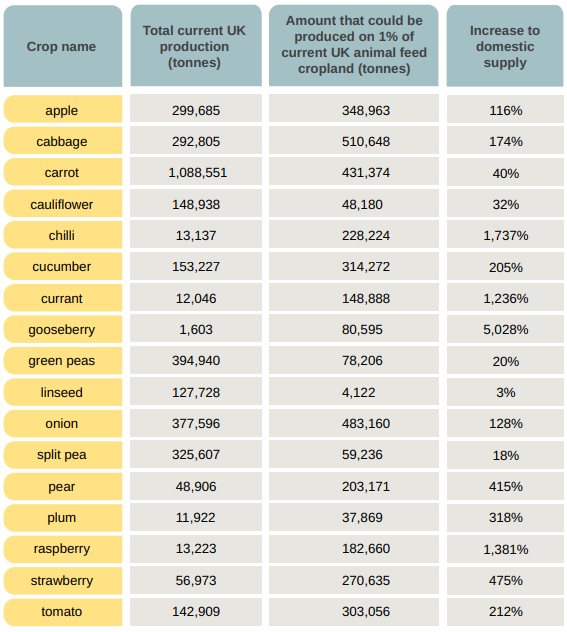
Table 1: Field crops currently grown in the UK by crop and production quantity, and the additional amount produced on 1 per cent of repurposed animal feed cropland.
With our temperate climate, and plenty of rain, we have the perfect home for fruit and veg. Viva! has produced a calendar of UK grown fruit and vegetables.
The Government has said that as we transition away from the Common Agricultural Policy, public payments (subsidies) will be awarded for public goods, and that these must support environmental recovery and take us in the direction of our climate change goals.
For farmers with land unsuitable for growing food for human consumption, being subsidised to restore native ecosystems that support climate change mitigation is a good option.
Climate scientists agree that it is too late to merely reduce our greenhouse gas emissions, we also need to remove CO2 from the atmosphere. Fortunately, we have experts with 350 million years’ experience in doing just that – trees! Trees are unique in their ability to lock up large amounts of carbon in their wood, and to continue to store carbon as they grow.
In the UK, our climax vegetation is trees. What this means is that if we leave the land alone to regenerate, or rewild, overtime it will reforest itself.
As we learned in section 1, we have enough arable land in the UK to meet the nutritional needs of our entire population, which means we can leave all our permanent grazing land alone to rewild itself, thereby expediting the journey to our climate mitigation targets.
If all current UK grazing land (~84,000 km2) were to be left to regenerate in this way, 3,236 million tonnes of carbon dioxide would be removed from the atmosphere; the equivalent to offsetting nine years of total current UK emissions.
Clearly, the Government needs to overtly subsidise this vital work which would not only result in climate change mitigation, but also provide huge wins for ecosystems and biodiversity.
Some governmental programmes exist, but they need to be greatly expanded upon. Wild Ken Hill in Norfolk is benefiting from the Countryside Stewardship grants managed by Natural England to rewild 1000 acres of marginal farmland.
North of the border, Robin Bell participated in the Forestry Grant Scheme reforesting 34 acres of his Sutherland croft with 22,000 native Scots pine, oak and birch trees.
These projects are fantastic, but rewilding and reforesting fragments here and there is not going to be enough. We need to leave all our grazing land alone, and farmers need to be paid to do that. We need to see the big picture.
The third option for farmers to financially protect themselves through present and future disruption is to begin a diversification enterprise. NFU Mutual, who insure farmers against adversity, are strong proponents of diversification. Their 2020 Diversification Report highlights examples of farmers who have branched out into non-traditional agricultural enterprises. Their report states that 65 per cent of farmers in England have already diversified to the tune of £740 million in additional income in 2018-2019!
In their 100 Ways to Farm Stock-Free, Farmers For Stock-Free Farming lists numerous examples of farmers and crofters who have created innovative business ventures to try something new whilst broadening their income base.
Lyn and Donald Forbes, whose former sheep and cattle farm is now an award-winning caravan site, advise: “Find something your area is lacking. Take a little time to see what will fit with who you want to be”.
Farm buildings can be repurposed to provide rented storage space, wedding venues, or children’s activity centres; land can be fenced to form a secure dog walking park, rented out for music festivals, or even turned into a green burial site; farm shops and veg box schemes can add a nice retail income to a farm business; and nature lovers can offer guided walks, bird-watching or even foraging workshops.
Chris Scott-Park of Portnellan Farm near Loch Lomond who offers speedboat rides, paddle boarding and kayaking on the Loch says, “Make use of what you’ve got. Take advantage of your location”.
These are difficult times. 2020 has been a year like no other. Yet we know that farmers are natural entrepreneurs, and within the chaos and disruption that we have all experienced this year, lies opportunity. So, let’s seize it and make ourselves, and our planet, kinder, healthier, and more abundant.




